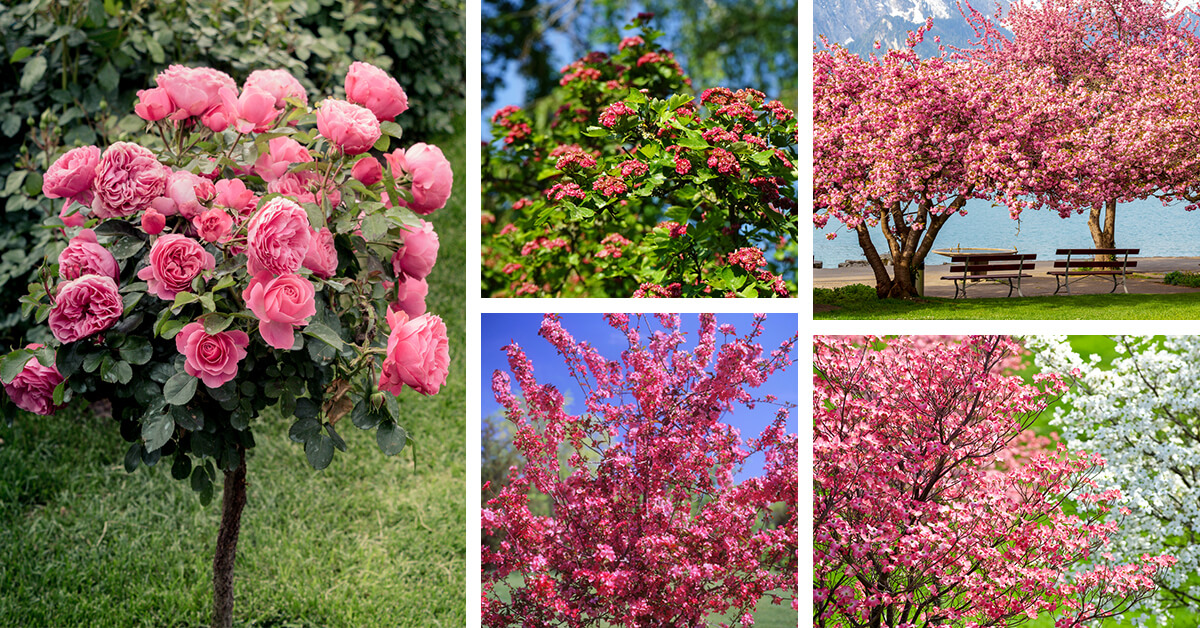Trees with pink flowers are among the best plants you can grow if you want to include an impressive color display in your garden. Each year these trees will captivate your garden guests as they fill their canopies with lovely pink blooms. Fortunately, there are plenty of pink-blooming trees for you to choose from, each of which offers its own unique beauty. But before you can select the pink flowering tree that is right for you, you should become familiar with some of the most popular options. This article will share 20 trees with pink flowers that you are sure to love.
Key Takeaways
We’ll cover many different types of trees with pink flowers in our list, and you’ll pick up a lot of interesting plant insights along the way. However, there are a few key takeaways that you’ll find ring true throughout this list. Below are a few of the top points that you’ll come to know as you browse through our 20 best trees with pink flowers:
- Trees with pink flowers survive throughout many different regions.
- Most trees with pink flowers are small or medium-sized, often growing between 10 and 30 feet tall.
- Pink flowers on trees can have varying shades and shapes.
- Pink blooms can invite pollinators that are valuable to your local ecosystem.
- Trees with pink blooms can have other attractive ornamental features, including leaves, growth habits, and bark textures.
Although it helps to know about some of the most popular trees with pink flowers, the chances are that you have a few more questions about the topic. Below, you can find answers to the questions people ask most commonly about these types of plants.
[wp-faq-schema title=”Frequently Asked Questions About Trees with Pink Flowers” accordion=1]1. Cornus florida ‘Rubra’ (Pink Flowering Dogwood)
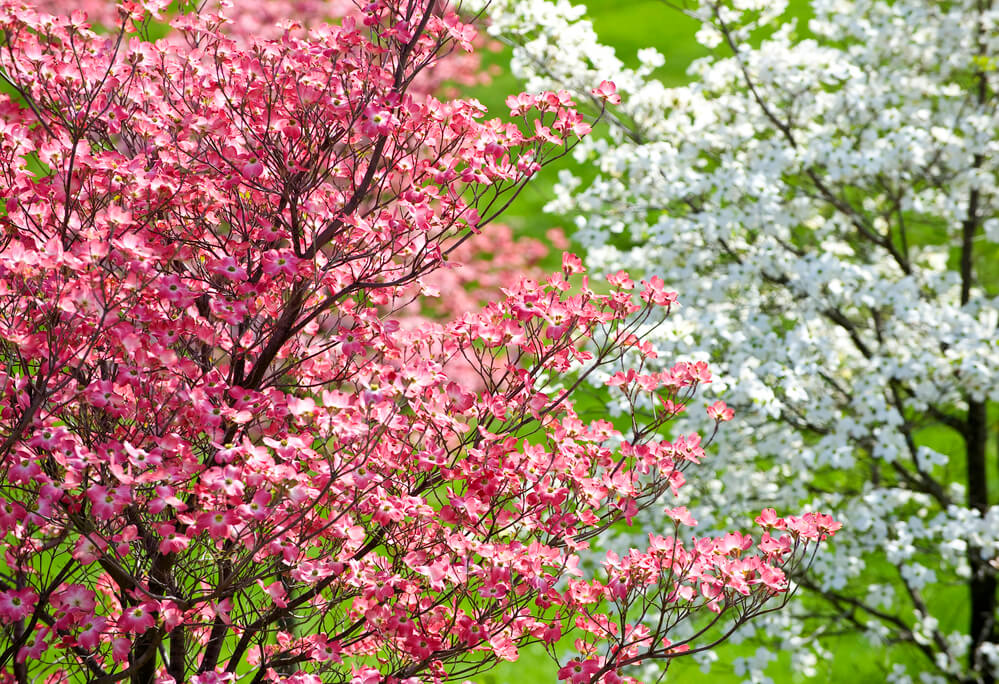
While there are many popular dogwood cultivars, the pink flowering dogwood, or Cornus florida ‘Rubra,’ is the best pick if you are interested in pink blooms. This tree typically opens its flowers in mid-spring, but it manages to provide ornamental appeal in other months as well. For instance, in fall, when the flowers have long since faded, the pink flowering dogwood continues to give color to your landscape thanks to its bright red fruit. But regardless of the season, this tree will maintain a graceful and delicate growth habit as it gradually expands to about 30 feet tall and wide at most.
2. Lagerstroemia indica ‘Whit III’ (Pink Velour Crape Myrtle)
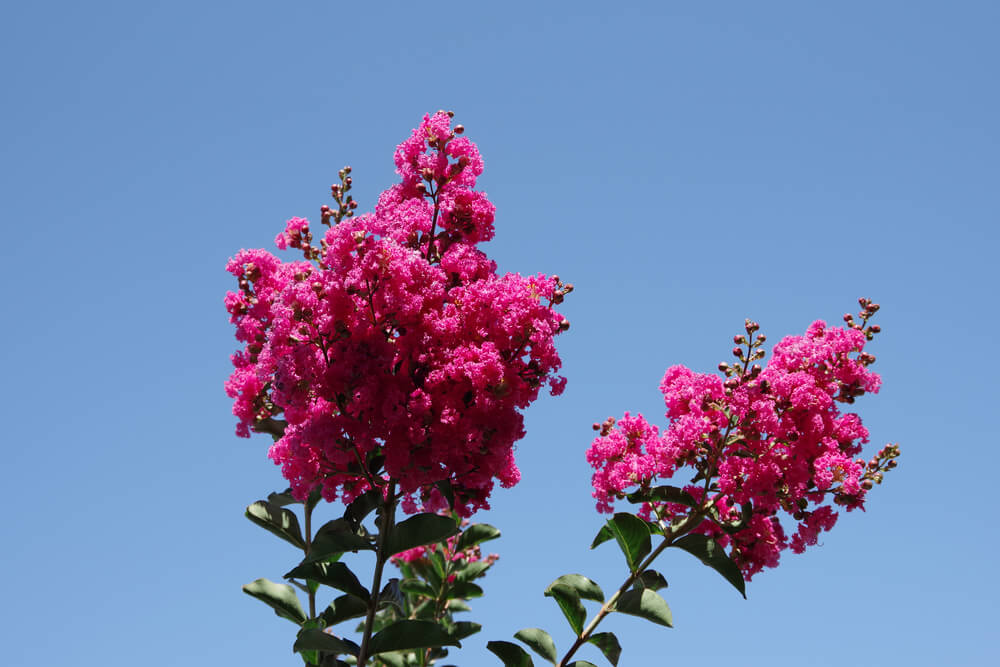
As was true of the pink flowering dogwood, there are multiple ways in which the pink velour crape myrtle adds ornamental value to your garden design. Of course, as its appearance on this list implies, this crape myrtle cultivar has fantastic pink blooms. As is true of other crape myrtles, the pink velour variety has a long-lasting bloom period that covers most of summer and fall. During that time, the blooms persist in dense, vibrant clusters. What adds further appeal to this plant compared to other pink flowering trees is its bark. That bark features large exfoliating patches that include shades of grayish silver and light brown.
3. Lagerstroemia indica ‘Hopi (Hopi Crape Myrtle)
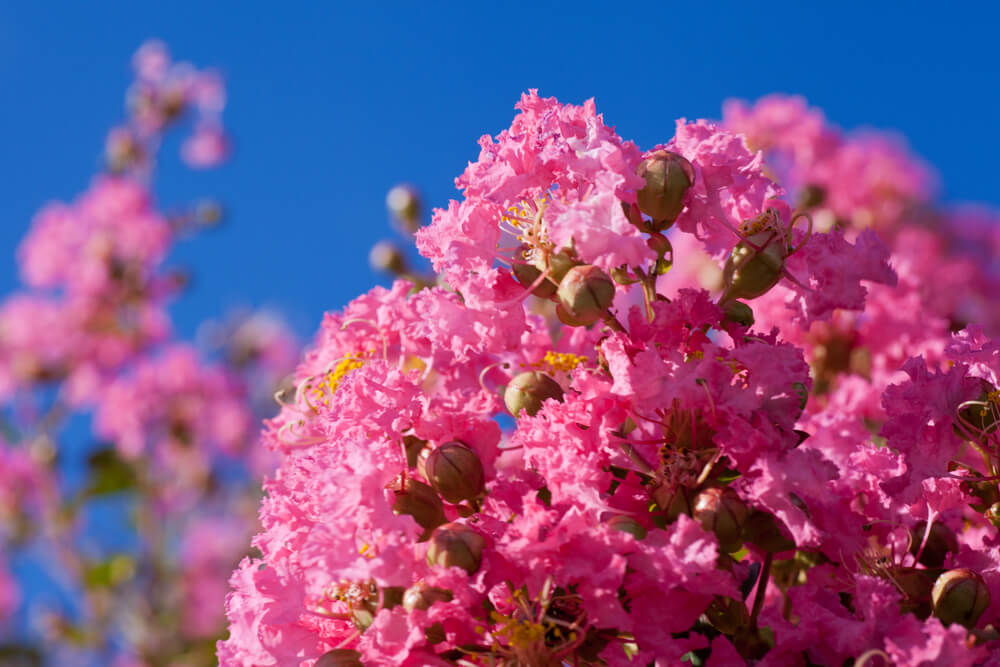
The crape myrtle family includes far too many spectacular pink-blooming cultivars to include only one on our list. The Hopi crape myrtle variety is on the smaller side and has a spreading, multi-stemmed growth habit. It’s no surprise that the flowers of the Hopi crape myrtle are as vibrant and colorful as those of any other crape myrtle. But what’s even more helpful to know is that this cultivar tends to have a strong resistance to mildew as well. This makes the Hopi crape myrtle a reliable option for adding a pop of pink, even in compact planting areas.
4. Crataegus laevigata ‘Paul’s Scarlet’ (English Hawthorn)
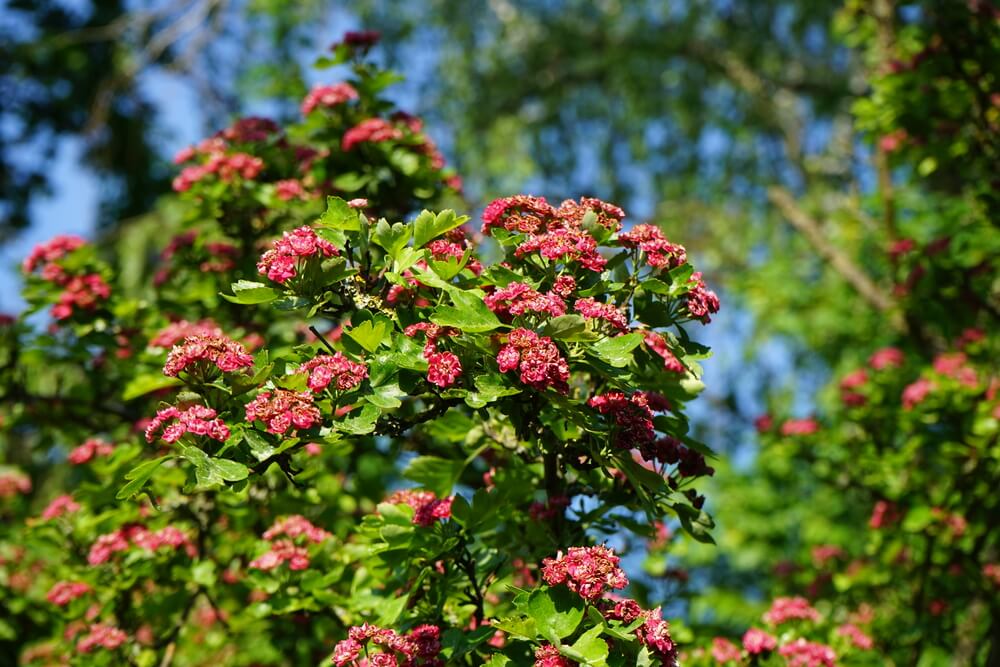
Admittedly, the English hawthorn is not a plant that is pleasant to prune and maintain since it features a set of large thorns on each branch. However, this tree may be worth those sharp points thanks to its incredibly showy pink blooms. Typically, these blooms make their presence known in mid-spring and begin with a reddish color. As the petals unfurl, that color experiences s subtle fade to pink. When the English hawthorn is not in bloom, it makes for a good massing plant as it has a dense growth habit and large deciduous leaves.
5. Malus ‘Pink Spires’ (Pink Spires Crabapple)
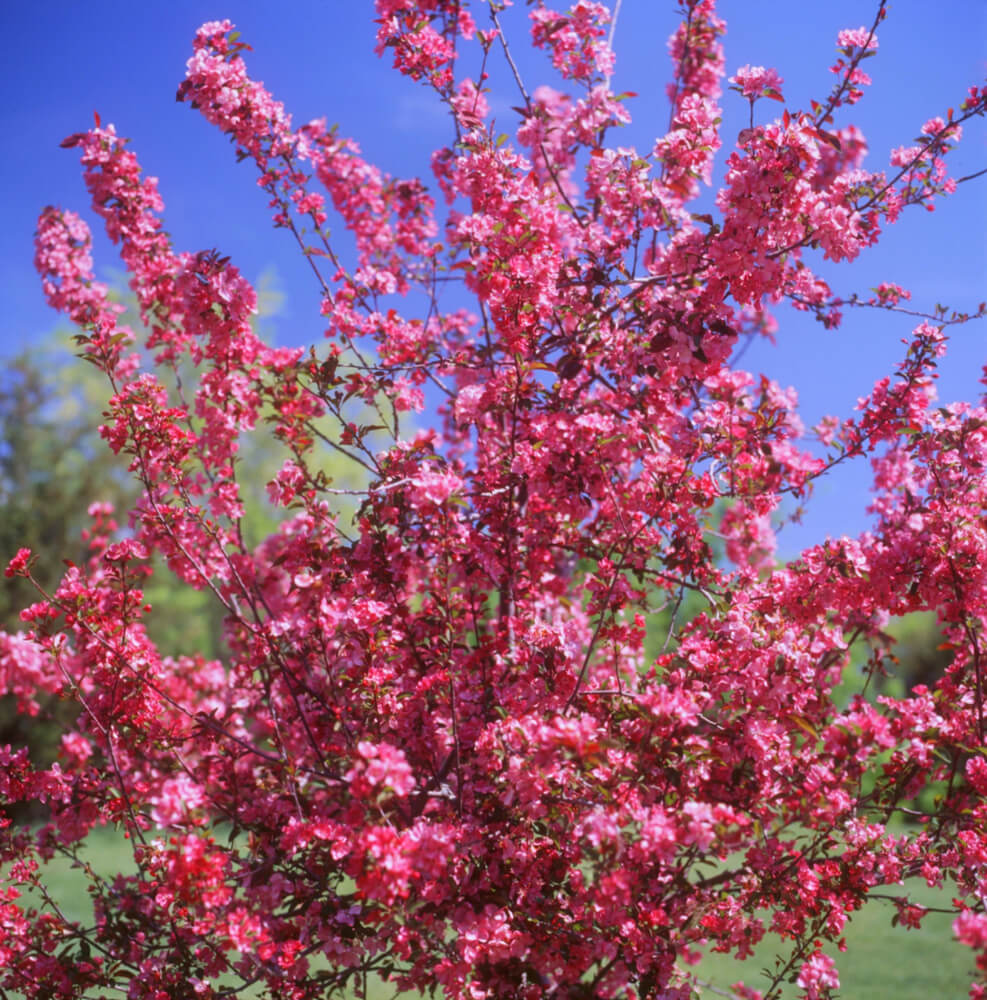
The name pink spires should give you some idea of what you can expect this tree to look like. Unlike other crabapples, which tend to spread just as wide as they are tall, this variety has a more upright, spire-like form. In spring, that spire shape turns entirely pink as the blooms open just before the green leaves arrive. The overall growth habit of this plant makes it another excellent option for anyone who wants a pink-blooming tree to grow in a relatively tight area. The pink spires crabapple also looks lovely in fall when its leaves turn a copper color.
6. Prunus cerasifera ‘Krauter Vesuvius’ (Purple Leaf Plum)
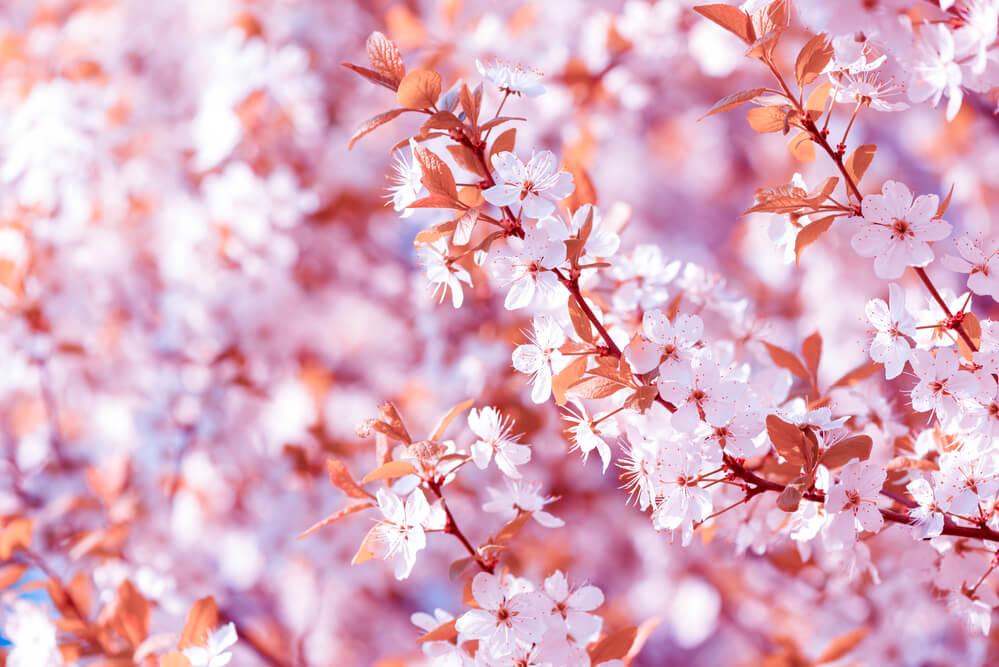
The purple-leaf plum is another excellent example of a pink flowering tree that blooms in early spring. This tree is also on the smaller side and puts out its delicate light pink blooms before the leaves appear. But as you may have suspected, based on the name of this plant, its leaves alone have immense ornamental appeal. When the foliage arrives, it begins with a bronzish purple hue. That hue then deepens to dark purple by the time summer arrives. The combination of the purple leaf plums, pink flowers, and uniquely colored foliage makes it capable of standing out during the entire growing season.
7. Magnolia x soulangiana (Saucer Magnolia)
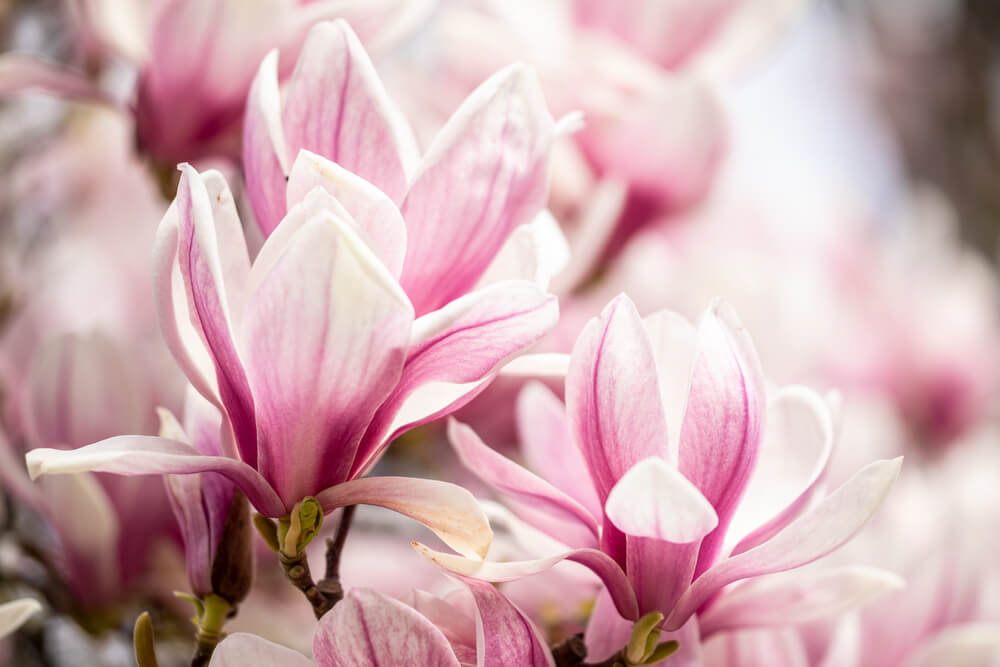
The magnolia family is an ancient group of plants that includes many different varieties, including several with pink flowers. As such, you can expect to see more than one magnolia appear on this list. In this instance, the saucer magnolia is a medium-sized tree with an incredibly descriptive name. The large, light pink petals of this tree’s blooms curve upward, giving the appearance of a saucer sitting on a plate. Those astounding flowers appear early in the spring and do best when they have some protection from the harsh later winter wind.
8. Magnolia liliflora ‘Jane’ (Jane Magnolia)

While some prefer magnolias that are taller and tree-like, some prefer a smaller, more rounded form. If you are part of that second group, then you should get to know the species Magnolia liliflora, which is somewhat shrub-like as it grows equally tall and wide. Within this species, there is a set of well-known hybrids that have great floral characteristics. The Jane magnolia is part of that hybrid group and has flowers with reddish and whiteish hues that coalesce to create an overall pink shade. As is the case for other magnolias, this one also blooms early in the season.
9. Prunus serrulata ‘Kanzan’ (Japanese Flowering Cherry Tree)
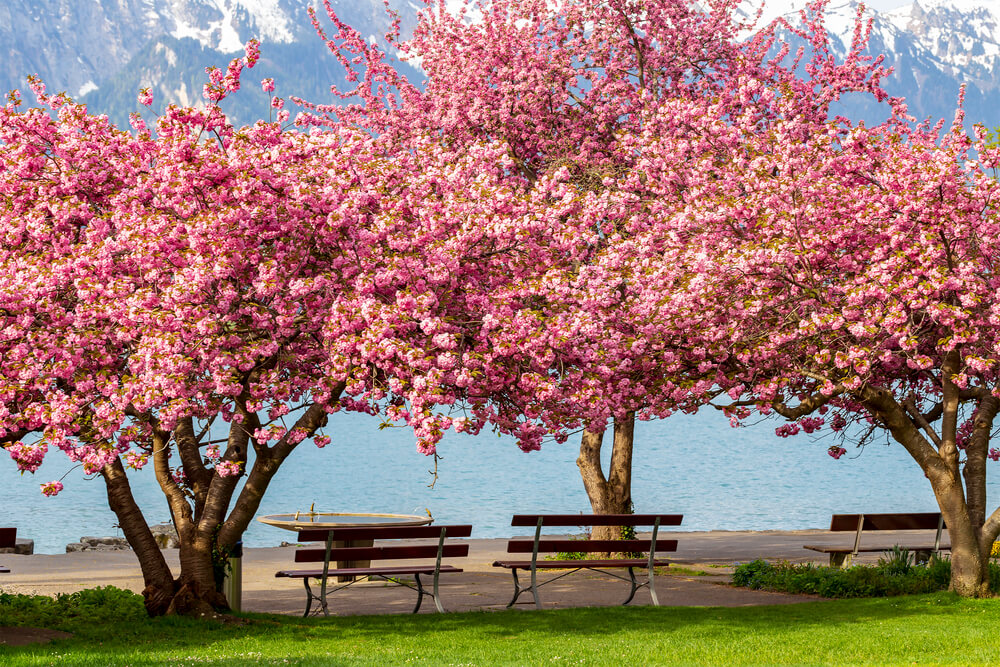
Among all pink flowering trees, the Japanese flowering cherry tree may be one of the most well-known throughout the world. Each year, people from many countries await cherry blossom seasons, when they get to enjoy the copious blooms of this variety as well as many other Japanese flowering cherry tree types. This cultivar not only has seemingly countless blooms, but each bloom is also double, meaning that it has a remarkably large number of petals. Additionally, compared to most other trees of this type, this cultivated variety often has the best cold hardiness.
10. Prunus pendula ‘Pendula Rosea’ (Weeping Cherry Tree)
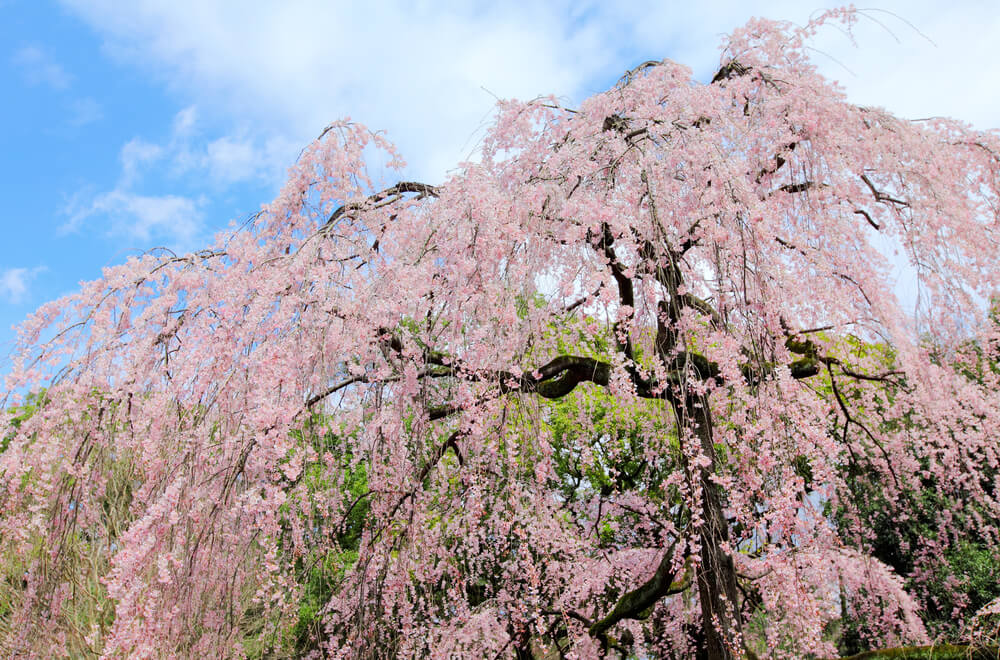
As if the canopy covering blooms of a cherry tree were not enough to make it stand out, this cultivar makes an even more impressive visual impact on the landscape. The reason is that this plant has long pendulous branches that create an intriguing weeping habit. Along those branches, sets of light pink flowers appear each spring. Those features can make for an otherworldly effect for anyone who sits below the canopy of a weeping cherry tree. The weeping cherry tree also looks great from afar as its loose branches sway in the breeze, adding movement and texture to your garden.
11. Albizia julibrissin (Mimosa Tree)
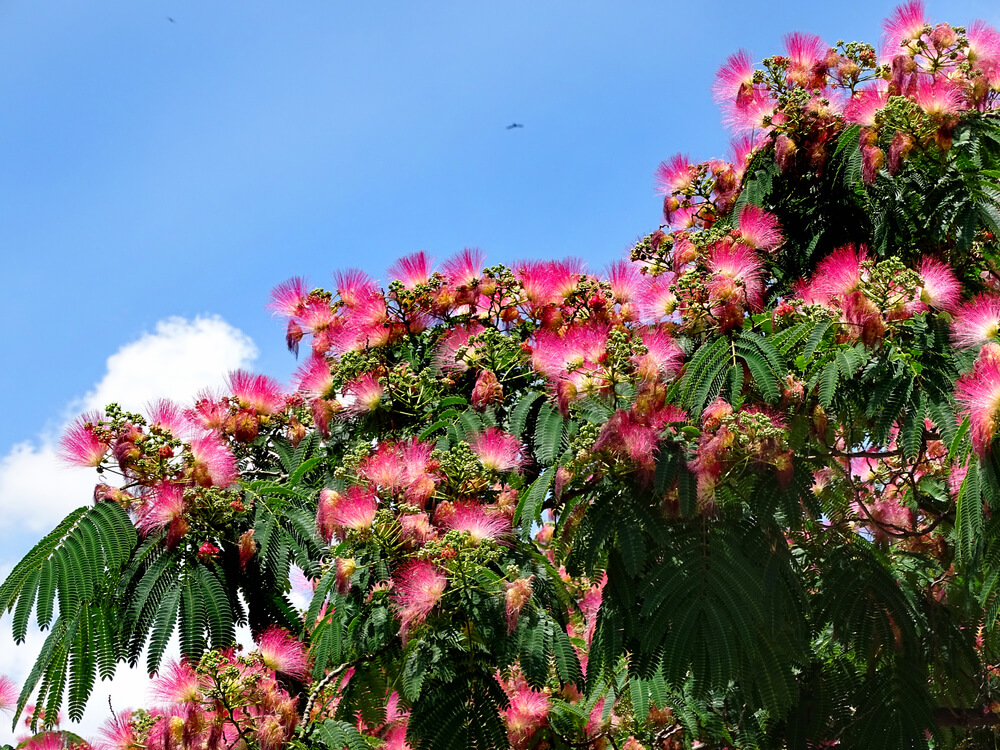
The mimosa tree, also known as the Persian silk tree, is another viable option for anyone who wants a tree with pink blooms. However, what makes this plant stand out from the others is the shape and structure of its flowers. Each flower consists of many long pink strands that almost look like the head of a paintbrush. The lower ends of those strands are pure white, but the middle and top ends are vibrant pink. For those who live in a warmer climate, a mimosa tree is a viable option as it thrives in subtropical zones and any area within hardiness zones 6 to 10.
12. Tabebuia rosea (Pink Tabebuia)
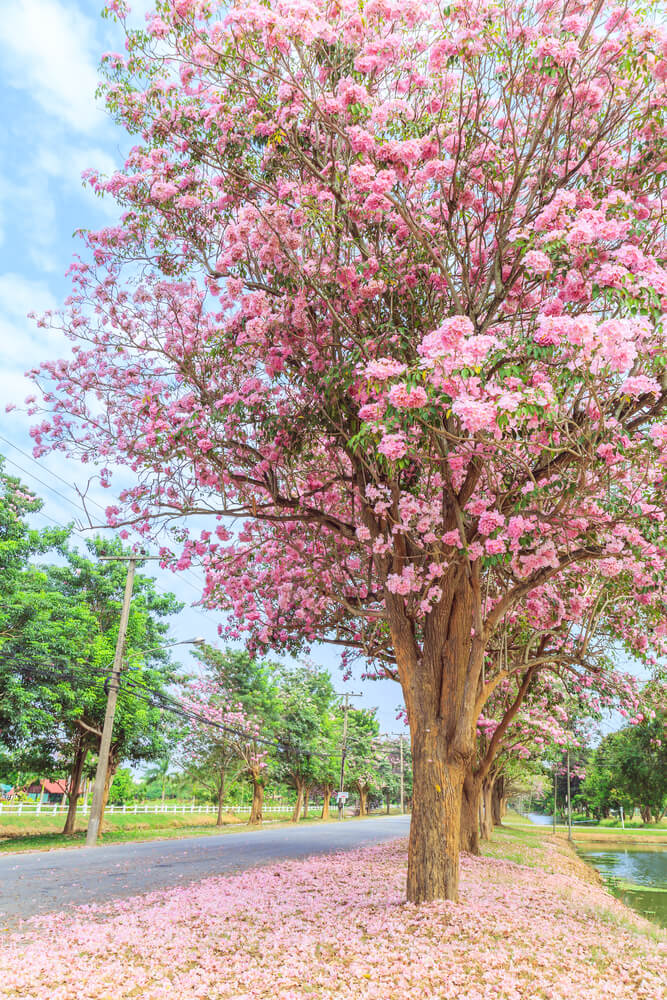
Just like the previous entry on our list of pink flowering trees, the pink tabebuia is another fantastic option for those who live in a subtropical areas, such as some southern portions of the United States. This plant is also a great option for those who want a larger tree in their yard. Since the pink tabebuia can reach more than 100 feet tall, with a considerable spread, it can act as a very effective shade tree. Its large canopy also makes the floral display all the more impressive as it appears a large swath of pink during the bloom time.
13. Camellia japonica (Camellia)
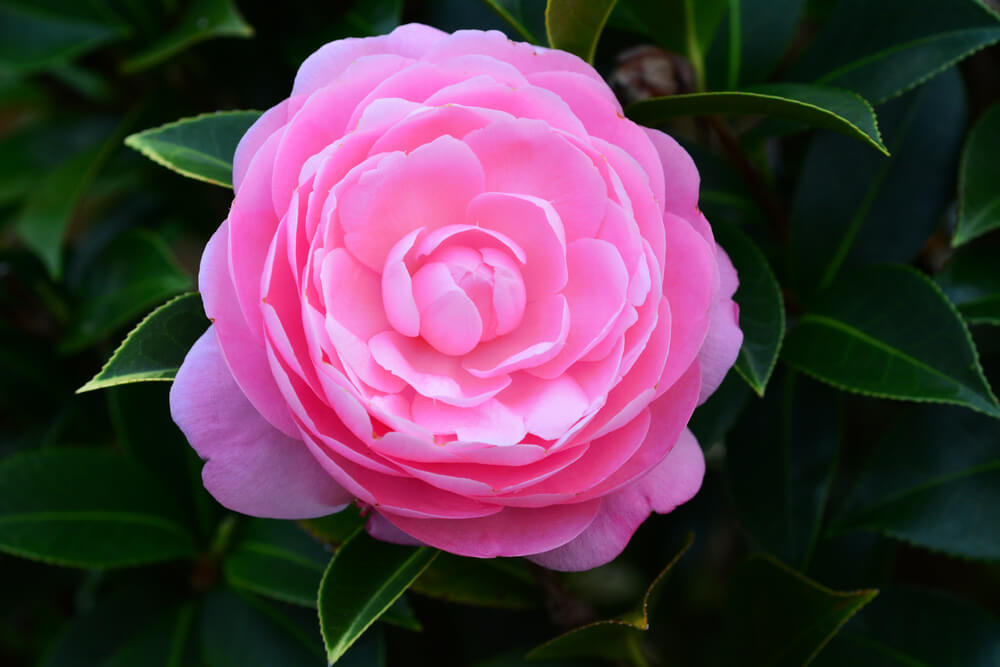
Simply put, there are very few flowering trees that have blooms that are as beautiful as those that appear on a Camellia tree. These blooms have many large petals that overlap, similar to the shape of a rose. Those elegant flowers come in several colors, including pink, and the contrast they make with the Camellia’s dark evergreen foliage makes the effect all the more impactful. These trees grow to be on the smaller side and don’t do well in full sunlight. Instead, your Camellia will look its best and remain most vigorous when you grow it in filtered sunlight.
14. Cercis canadensis (Eastern Redbud)
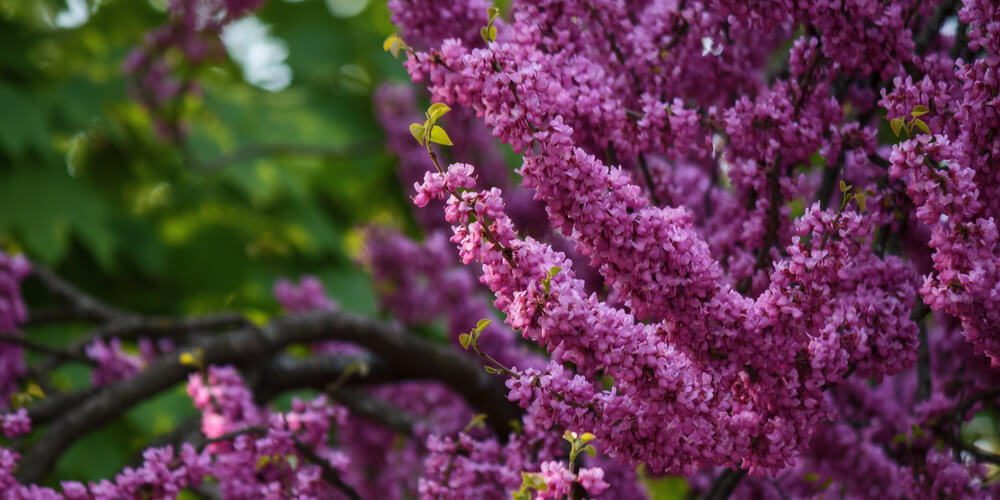
Anyone who is familiar with the eastern redbud knows that this tree is one of the first signs of the spring season in many regions. This species is small to medium-sized, and each year it blooms before it puts out its leaves. The result of that timing is that each bare branch of this tree will suddenly have a coat of incredibly vibrant flowers that can range from pink to light purple. Another great aspect of growing the eastern redbud is that it has noteworthy foliage as well. Those deciduous leaves grow in a distinct heart shape and are relatively large and noticeable compared to the leaves of many other tree species.
15. Cercis occidentalis (Western Redbud)
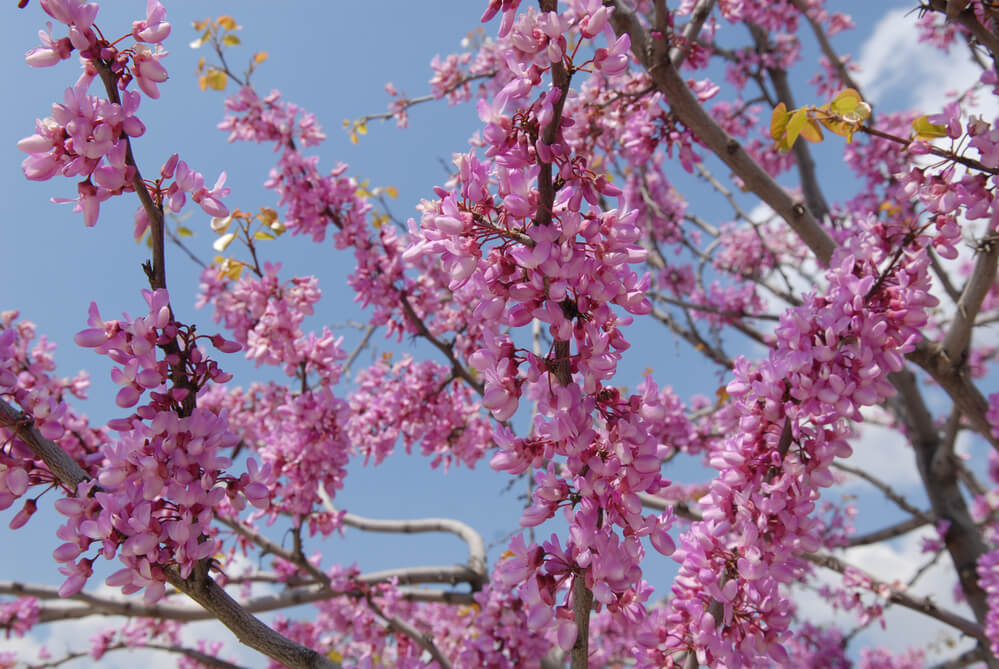
Not everyone will have the chance to grow the eastern redbud. In fact, as the name implies, that species grows almost exclusively in the eastern half of the United States. Fortunately, for those living in the western half of the country, there is an equivalent alternative. The western redbud comes from the same genus as the eastern redbud and has very similar floral characteristics in that it blooms early and has very brightly colored dark pink flowers. As was true of the eastern redbud, the western redbud is also a great supporter of local wildlife, including birds and pollinator insects.
16. Prunus triloba ‘Multiplex’ (Flowering Almond)
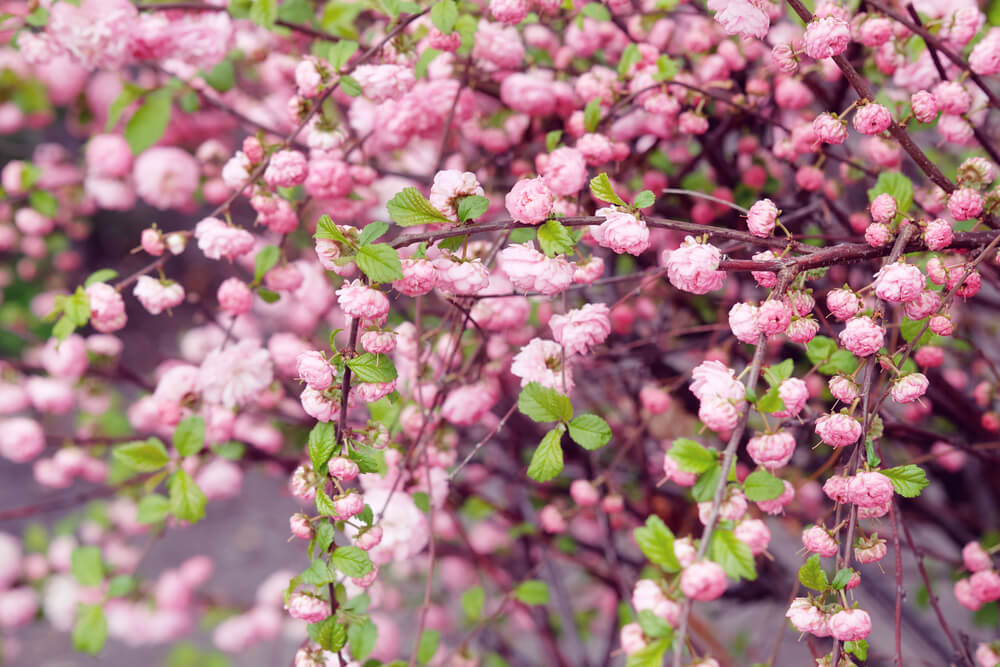
Even though we call this plant the flowering almond tree, you should not expect to receive a large harvest of nuts if you grow one. Surprisingly, this plant does not produce any almonds or fruits at all. Instead, its value in the garden comes entirely from its ornamental appeal. The flowering almond tree has double pink flowers and can grow as a large shrub or a small tree, depending on how you care for it. In fall, the flowering almond tree continues to add color as its deciduous leaves turn a golden yellow color.
17. Bauhinia blakeana (Hong Kong Orchid)
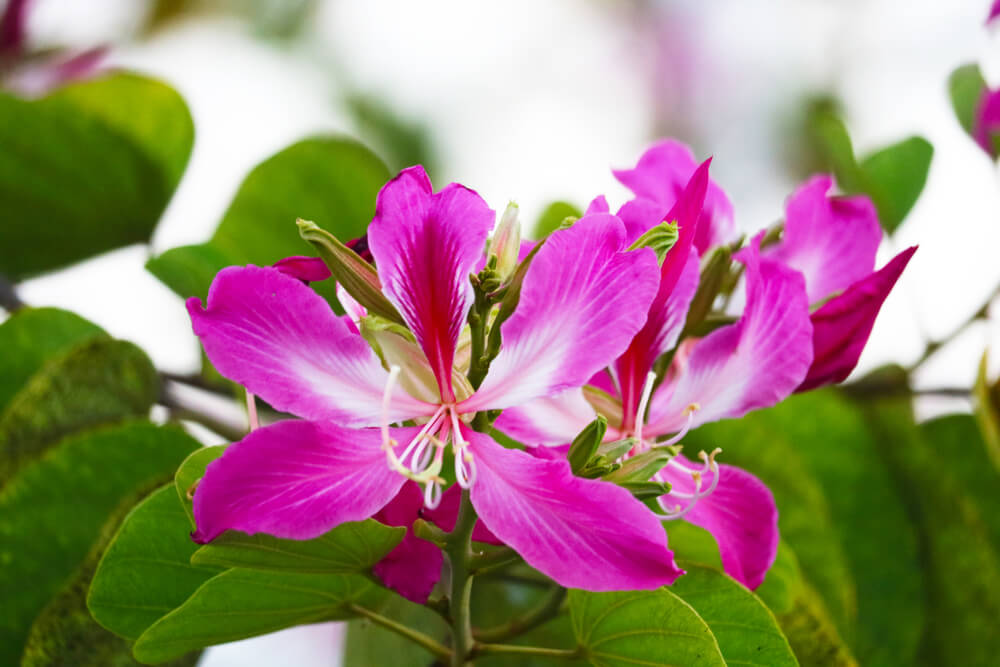
Some of the trees with pink flowers on our list have had flowers that are relatively small. However, that is not the case for the Hong Kong orchid tree. On the contrary, this native Chinese tree has flowers with petals that are long, broad, and deep pink. The Hong Kong tree itself is rather large, growing to 25 feet tall or more. It also has a unique bloom time as its flowers are generally present from later fall to mid-spring. With a preference for hardiness zones 9 and warmer, this plant is only an option for those who live where the weather remains relatively warm year round.
18. Hibiscus rosa-sinensis ‘Pink’ (Hibiscus Tree)
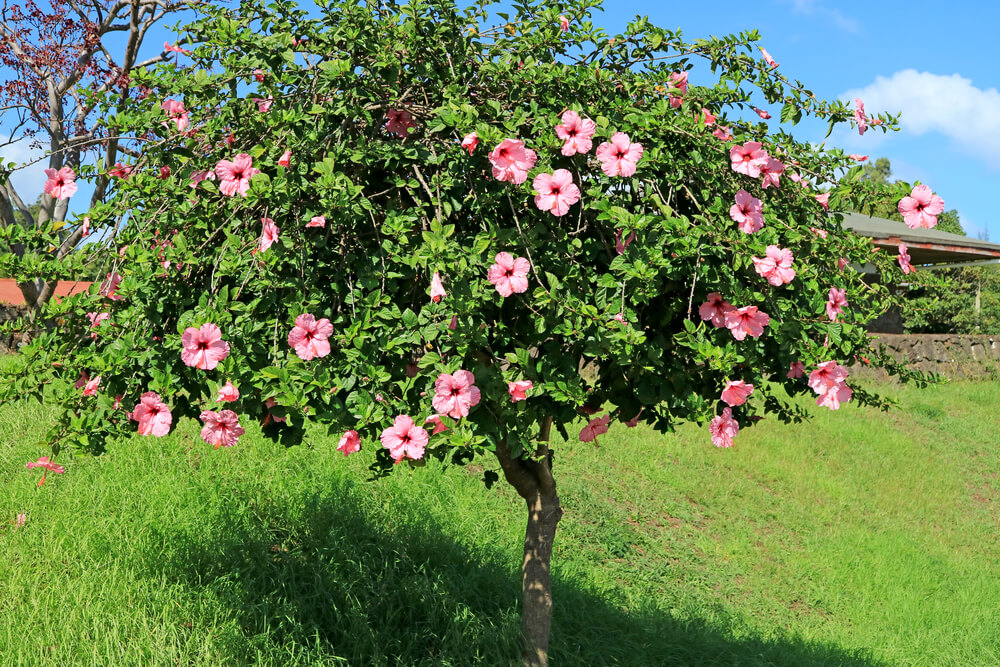
The hibiscus tree, which has the scientific name Hibiscus rosa-sinensis ‘Pink,’ is a cultivated plant with showy pink flowers. This plant blooms later in the summer, and when it does, each of its flowers stands alone within the canopy. You’ll know this plant right away based on the shape of the flowers, which are rounded and trumpet-like, often with a prominent central structure. You can also alter the growth habit of this tree if you raise it from a young age. Depending on how you prune and train it, your pink hibiscus tree can have an irregular multi-stemmed habit, or it can grow in a more traditional tree shape with a single main trunk.
19. Loropetalum chinense var rubrum ‘Zhuzhuo Fuchsia’ (Chinese Fringe Tree)
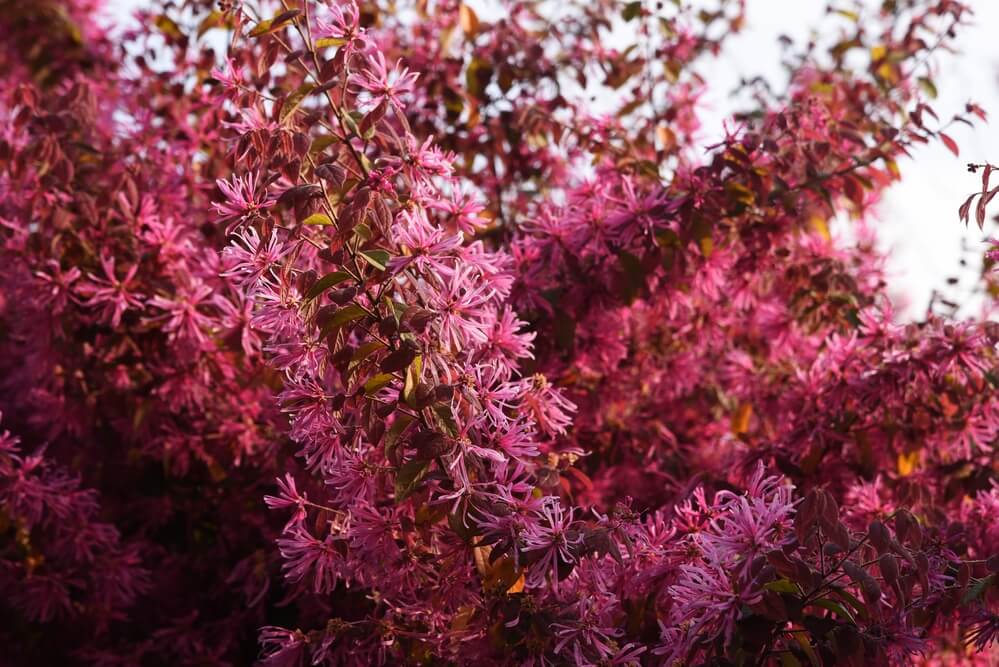
There are several types of Chinese fringe trees, and each one can have different colored flowers. However, if you specifically want one that has bright pink blooms, then you need to look for a plant with the name Loropetalum chinense var rubrum ‘Zhuzhuo Fuchsia.’ This cultivated version of the fringe tree has flowers that have a nearly perfect pink color and make for an interesting texture due to their long spindly petals. For those who have some understanding of bonsai pruning, this is a plant that gives you a chance to employ your skills to develop an artistic growth habit.
20. Rosa ‘Radcon’ (Rose Tree)
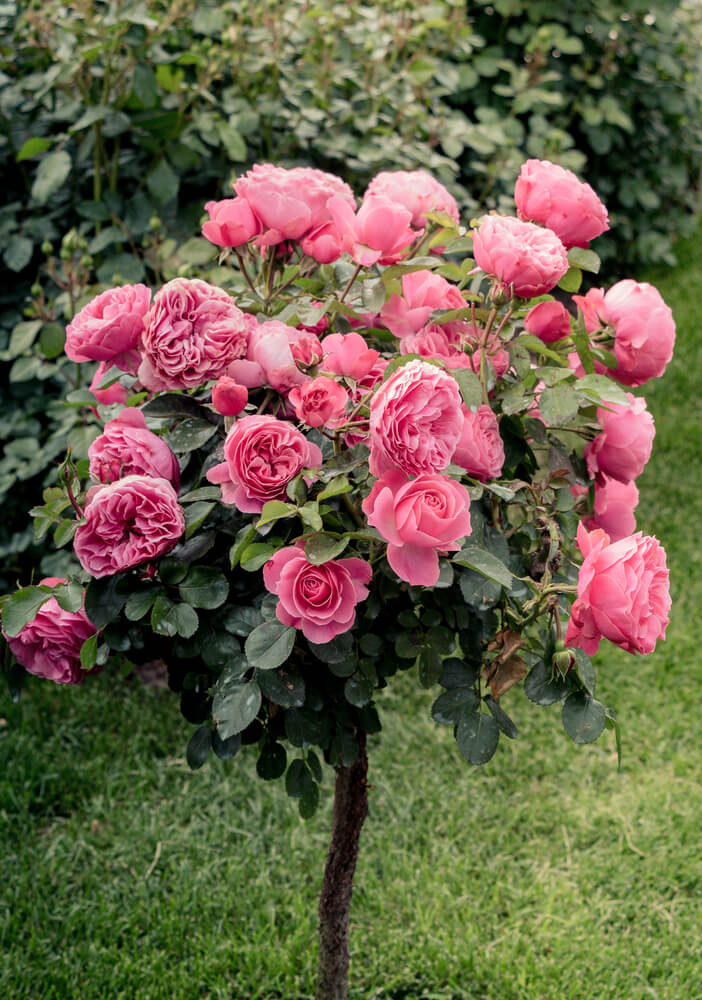
Perhaps it is a bit of a stretch to call this last plant on our list a true tree. After all, it only grows to be a few feet tall. With that said, it can have a tree-shaped growth habit, and it features pink rose flowers that are too lovely to leave off of this list. With the right pruning and training practices, you can easily encourage your Rosa ‘Radcon’ to develop with a single central trunk that holds a neat, rounded canopy. Each year, that canopy will show off bright pink roses that are as pleasing to the eye as any other rose that you can find.
Summary
You now know about 20 of the best trees with pink flowers in existence, which means there is nothing stopping you from adding one of these lovely species to your property. As is always the case when selecting plants, you should choose a pink-blooming tree that will thrive in your growing location. Once you do that, you can move on to deciding which of these fantastic trees has the ideal pink flowers for your landscape. With the right care and attention, your pink flowering trees will reward you with an incredible floral display year after year.


